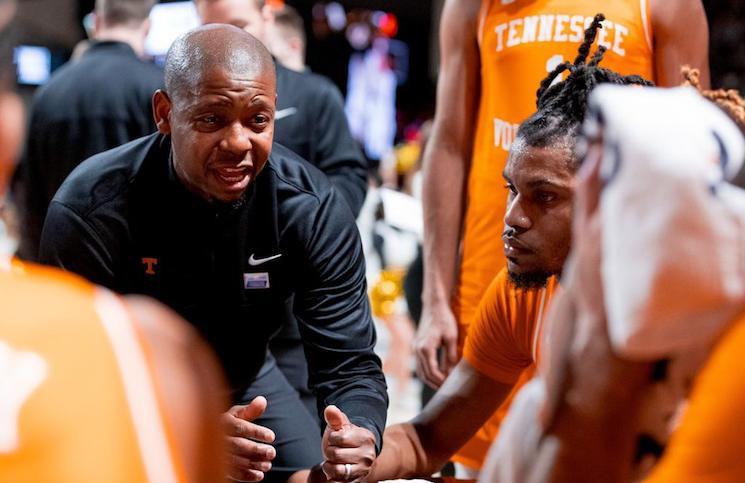
This Week in UT Sports History is a weekly column written by RTI columnist Lexie Little
Well, folks, ain’t no college sports on Rocky Top. I typically do not address you, readers, in this weekly column, but this seemed like an appropriate time to do so. I’m in a fortunate position as a sports historian to recount events that have already happened for you to relive or to read about for the first time. My colleagues in the sports media world, however, are not so fortunate at present with seasons on hiatus. Many reporters must now navigate work without a spring practice to watch, a tournament game to live tweet, or a conference match-up to recap.
And you miss these events, too.
We recognize all too well the void left in our lives without college sports, especially those of us in the realm of the Southeastern Conference. But this moment does not mark the first time fans sat at home without a game to attend. World Wars took college and professional players and coaches overseas, causing teams to disband and seasons to suspend. The National Football League cancelled seven weeks of games because of labor disputes in 1982. And though this marks the first time the NCAA Tournament failed to commence since 1939, weather has often upended single games through the years.
We must flatten the curve if we want to watch SEC pitchers like Garrett Crochet throw another curve. So, in the meantime, enjoy these memories in UT sports history as we wait – though impatiently – to make more.
March 19, 1989
Sports writer Cindy Smith of The Tennessean traveled to Knoxville for the second round of the NCAA women’s tournament. The Lady Vols topped the field at No. 1 in the polls, undefeated at home with a record of 31-2. At the 9:25 mark in the first half, the Lady Vols fell behind La Salle, 19-18. What would Smith’s lead paragraph say? Could La Salle pull of the upset of the decade?
Dateline: KNOXVILLE, Tenn.
“La Salle Coach John Miller, who once studied to become a priest, didn’t have a prayer against No. 1 Tennessee last night…” Smith wrote.
La Salle failed to pull out a miracle despite a close first half where the underdogs led with around eight minutes to play, 21-20, before the Lady Vols pulled ahead with Bridgette Gordon’s 19 points before the half.
La Salle seemed to keep its poise against a roaring crowd and voracious Lady Volunteer coach, Pat Summitt, with ice in her eyes and fire in her heart, not to mention a few thoughts about poor play in her head.
“I thought in the first half it was obvious that we had had days off,” Summitt said. “We were rusty. Our defense was not like I wanted it, and you have to give La Salle credit.”
Tennessee’s offense erupted in the first five minutes of second half play, extending a 39-28 lead to 54-32. Despite La Salle’s superior defense on the boards, outrebounding the Lady Vols 37-35, Tennessee pulled out a 30-point win, 91-61. Sheila Frost passed Mary Ostrowski for the title of all-time leading Lady Vol rebounder in the game. Her four rebounds gave her 1,004 career boards (Chamique Holdsclaw later passed Frost with gusto, holding the rebound record of 1,295 boards. She also stands as the Lady Vols’ leading scorer with 3,025 points). Bridgette Gordon, who earned 29 total points in the game after 19 in the first half, sits at second on the all-time scoring list with 2,642 points.
Frost, a senior, fouled out in her last game at home.
“It went through my mind that it was the last game I’ll play here,” Frost said. “But, I wasn’t sad because we still have four more games to play, I believe.”
More games, indeed. The Lady Vols went on to win the NCAA Tournament, beating conference rival Auburn 76-60 for the program’s second of eight national titles.
March 16, 1951
The Lady Vols filled trophy cases at the University of Tennessee with eight crystal balls. Those championship wins and other tournament runs often make at least the footnotes in most program-related stories. Tennessee baseball’s past, however, remains largely forgotten. But this week in 1951, the Vols commenced a run that would lead them to the No. 2 spot in the country, runners-up in the College World Series to national champion Oklahoma.
After a 12-6 win against conference rival Florida in Gainesville on March 15th, the Vols took to Perry Field again the next day for the second game of the season. Riding high on a strong first showing, Tennessee did not expect to get whipped.
The Vols were wrong.
Tennessee lost its only regular season game to the Gators, 15-3, on March 16, 1951. The special report from the Knoxville News-Sentinel detailed the disappointment in which three pitchers gave up 15 hits for 15 runs while the Vols only scored three on eight hits.
“The Gators wasted no time getting to Vol starter Billy Joe Bowman for two runs in the first inning,” the report read. “Florida then came to life with three more in the third and seven in the fourth to win going away.”
Tennessee eventually got the last laugh, beating Florida 5-3 and 3-2 in the last two games of the season in Knoxville. The Vols beat Florida, Georgia, and Georgia Tech thrice each in 1951. They also beat in-state rival Vanderbilt 17-0 at Lower Hudson Field in Knoxville.
Head coach S.W. Anderson, in his fourth season, propelled Tennessee to a 20-3 (16-1 SEC) record and the top spot in the SEC baseball standings. (Vanderbilt, by the way, finished 0-13-1). The SEC Champion Vols lost the national championship game on June 17th to Oklahoma in Omaha, Nebraska, in a close 3-2 game.
March 18, 1992
Postseason games remain on the minds of many now that they won’t come to pass in the year 2020. But in 1992, the Tennessee Volunteers accepted a bid to the National Invitation Tournament (NIT) to play the University of Alabama-Birmingham on March 18th.
Naturally, the Vols had hoped for the NCAA Tournament, but their 8-8 conference record failed to get them to the Big Dance. They had won the first game of the SEC Tournament against South Carolina, 70-63, and only lost by 10 points to No. 23 LSU in the second round. Still, the Vols failed to compete at the level necessary for a big postseason run, much like the 2019-20 team with a 9-9 conference record.
“We all wanted to be in the NCAA Tournament,” Tennessee guard Allan Houston said after Game 1 of the NIT. “But once you start to put your uniform on, that’s all over and you concentrate on playing basketball.”
Only 4,810 fans ventured to Thompson-Boling Arena, which could seat 24,535, because they, too, had held higher expectations for the team. Omens seemed to bode ill for the Vols even before tip-off. Power forward Carlus Groves, standing 6-foot-7, sat in the stands after a suspension for fighting on the court with LSU’s Shaquille O’Neal during the SEC Tournament a few days prior.
Sports writer David Climer recounted the image of the man hard to miss, the 240-pound spectator with skin in the game, though not physically in the game.
“I was saying, ‘C’mon fellas, give me one more chance,’” Groves told the press after the game. Climer noted Groves’ “estranged teammates obliged” with a late burst to win 71-68.
Houston sunk a three-point shot with four minutes remaining, down 68-62, before making two free throws and a clutch shot with 1:34 remaining. The Vols held on to win and advance to the second round, where they lost to Virginia.
The early 1990s proved a difficult time for Tennessee men’s basketball. Just two seasons later, the Vols finished 5-22 overall with an abysmal 2-14 conference record and an overall winning percentage of .185. Though Rick Barnes and company will not get to play a final tournament game this season, at least Vol fans can sleep at night knowing Tennessee put up a better record than 5-22.



